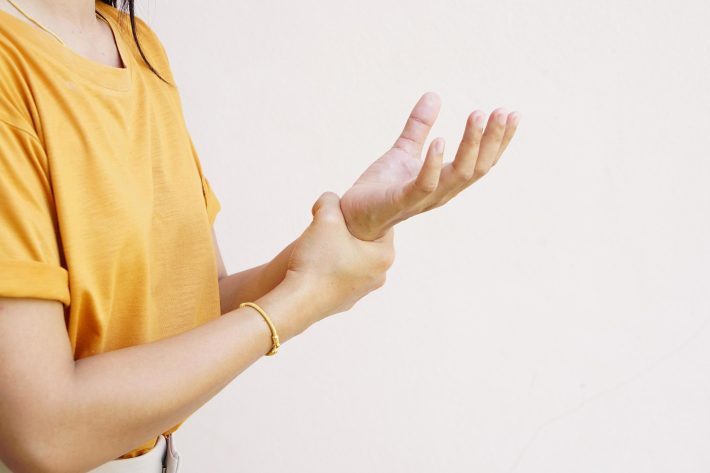
Clicks, cracks and pops are common, especially in fingers, knees and the spine. In many cases the sound comes from a brief change in pressure inside a synovial joint. As two joint surfaces separate, gases in the lubricating fluid form a cavity and you hear that quick pop. This “cavitation” shows up clearly on real-time MRI and settles within seconds before the joint can pop again. If you’ve ever searched for a physio near me right after a sharp crack, remember that the sound itself isn’t proof of damage.
Once you add movement, more sounds can appear. Tendons can snap over bony ridges, and ligaments may flick as angles change. Roughened cartilage from wear or a past injury can also create grinding or crackling, often called crepitus. These noises can be harmless when they aren’t tied to pain, swelling or loss of movement, though they’re worth noting if they’re new, persistent or linked to a specific incident.
Does joint cracking lead to arthritis?
Short answer: evidence says no. Studies comparing habitual knuckle-crackers with non-crackers don’t show higher rates of hand osteoarthritis. Some research points to small downsides such as transient swelling or lower grip strength in heavy crackers, yet the feared arthritis link hasn’t held up. The pop is a pressure phenomenon, not bone “grinding”. That aligns with what many Noranda physiotherapy clinicians see in practice.
Clicking without pain: usually harmless
Plenty of healthy people have noisy joints. Knee crepitus shows up in a sizeable slice of the population without pain, and among those with knee pain, having a noisy knee doesn’t automatically mean worse strength or function. A Noranda musculoskeletal physio would focus less on the soundtrack and more on how you move, how strong you are through range, and whether symptoms change under load.
When a click signals trouble
Some signs deserve a check-in. Seek an assessment if clicking comes with swelling, warmth, locking, giving way, sharp or persistent pain, a recent injury, or rapid loss of motion. Shoulder or hip “snaps” paired with weakness may reflect tendon irritation. Knee catching after a twist can hint at a meniscal issue. Crepitus plus morning stiffness and joint enlargement may suggest osteoarthritis that benefits from targeted rehab and load management.
What about cracking the neck or back?
Many people self-twist the spine for relief. The audible crack is still cavitation, not a vertebra “going back into place”. Manual therapy can help some conditions, yet the noise is neither required nor a measure of success; improvements are more likely due to nervous system and mechanical effects, plus the exercise that follows. If you like hands-on care, book with an experienced clinician in Morley or a trusted physio Noranda, and expect thorough screening, gentle progressions and homework. Serious complications from high-velocity manipulation are rare but real, which is why a careful assessment and the right technique matter.
Practical ways to quiet noisy joints
- Warm up with intent. Slow, controlled repetitions take tissues through range and “prime” cartilage lubrication.
- Build capacity. Strength around hips, knees, shoulders and the trunk smooths joint loading through daily tasks and sport.
- Mind your volume. If a specific drill always triggers a painful click, trim reps, tweak angles or reduce speed, then rebuild.
- Stay active. Joints like movement. Cycling, brisk walking and pool work are friendly options during flare-ups.
- Footwear and surfaces. Small changes in cushioning and terrain can calm irritable knees and ankles.
These strategies sit at the heart of good sports physiotherapy, and they apply whether your goal is stairs without grumbles or a stronger return to running.
Myths, sorted
- “Cracking wears out cartilage.” Not supported by the evidence on hand joints. Cartilage health tracks more with age, genetics, prior injuries and load management over time.
- “Louder equals worse.” Volume reflects the physics of fluid and pressure, not damage level.
- “If it clicks, stop all exercise.” Pain-free clicking usually isn’t a reason to stop. Smart training with progressive loads is often the fix, not the foe.
When to see a physio or GP
Book an assessment if joint noise pairs with pain beyond a few days, recurrent swelling, night pain, locking, recent trauma, numbness or weakness, or if you have a history of inflammatory arthritis and new symptoms appear. Early guidance helps you keep moving while symptoms settle, and cuts the risk of guarding and de-conditioning. A thorough plan should include activity tweaks, progressive strengthening, and clear markers that show you’re on track.
The short answer
Clicking or cracking by itself is usually a normal by-product of joint mechanics. It doesn’t mean your joints are wearing out, and it doesn’t automatically point to arthritis. Pay attention to the company it keeps. Noise with pain, swelling or loss of function deserves a proper look; noise without symptoms is often just that. If you’re unsure, reach out to your local physio team in Morley for a personalised plan that matches your goals and daily life.
